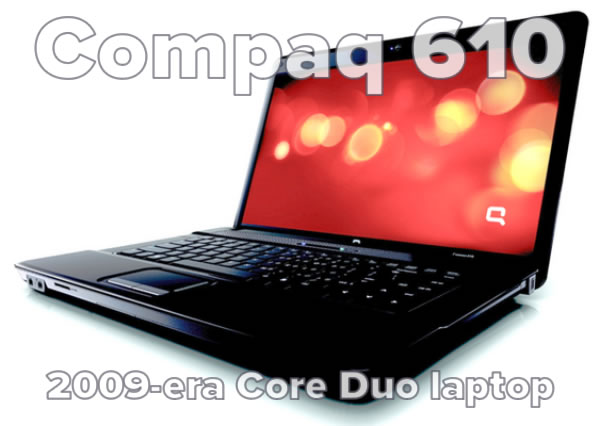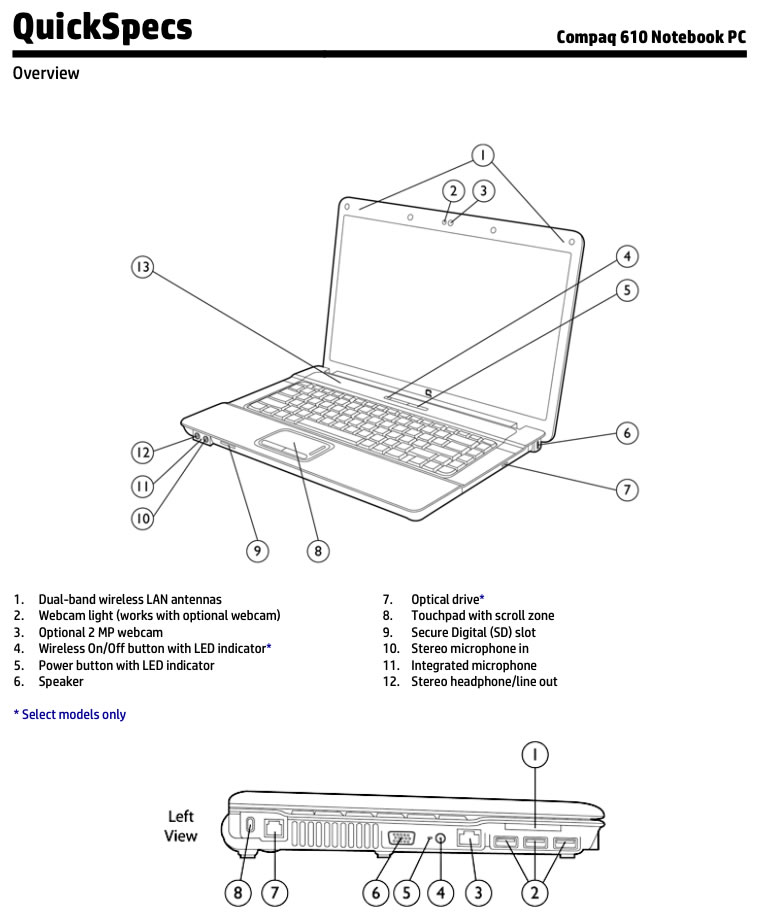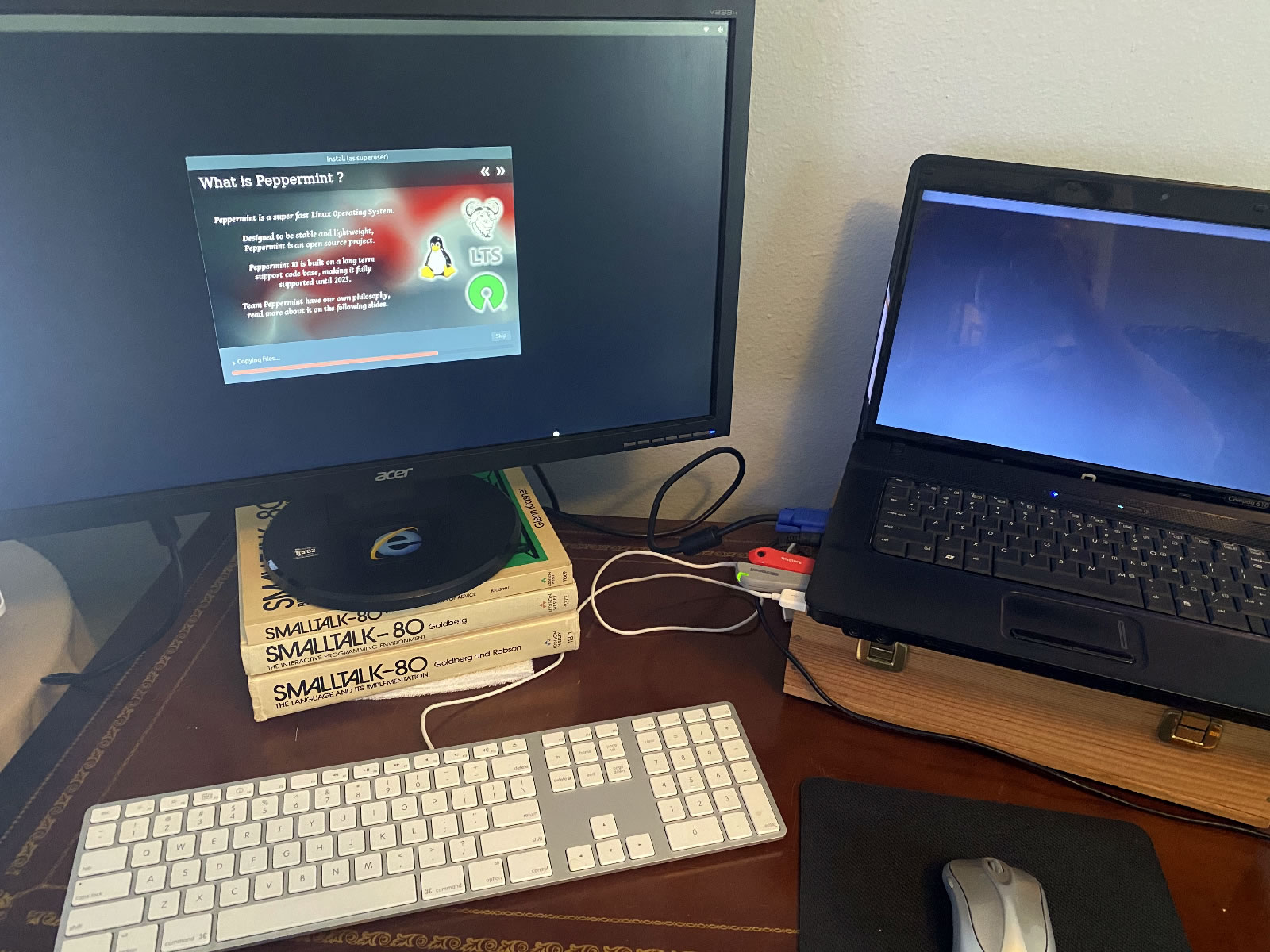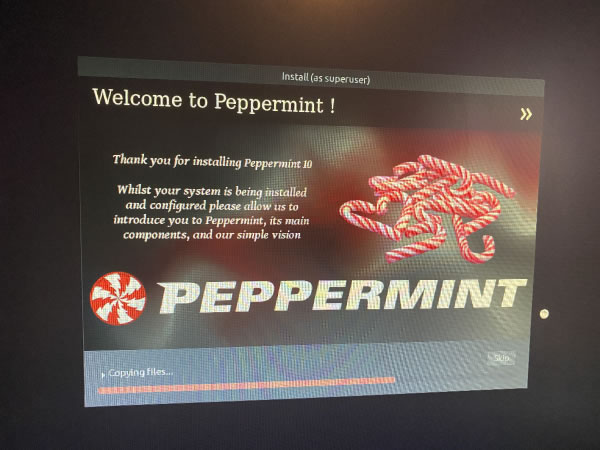
I always keep an old computer or two around “just in case,” and it often turns out that they’re useful for all sorts of things. In an age when online access is a necessity and in a line of work where being able to put together a quick web page, application, or server is important, a spare computer — even one that’s a little bit backward by today’s standard — can be a handy resource.
Enter “tinymint,” a Compaq 610 laptop that Anitra got from her old workplace a couple of years back for $50. (You should be able to find a used one, or one with similar specs, for about $100.) We originally got it to give to her parents so that they’d have a half-decent machine on which to surf the web, but we’ve since replaced it with a Chromebook, which requires less maintenance. They gave the Compaq back to us, and I’ve since boosted its RAM to the maximum: A whopping 4 GB, which was pretty respectable in the Windows Vista era when it was manufactured.

In case you’re curious, here’s a quick rundown of the specs of my particular Compaq 610. Remember, this laptop is almost old enough to get its own YouTube account or Bat/Bar Mitzvah:
- Chipset: Mobile Intel GME965 Express chipset with ICH8M, 800 MHz front side bus. This chipset is from around 2007.
- Processor: Core 2 Duo T5870 (2.0 GHz, 2 MB L2 cache, 800 MHz FSB). This is better than the other options: The dual-core Celeron T1500 and the Celeron 560, both of which had the slower 533 MHz bus.
- RAM: 4 GB. This is the maximum, which isn’t surprising for a 2009-era computer. 32-bit operating systems were the standard then (64-bit OSs were available, but at a premium), and they’re limited to accessing about 3 GB of memory. The machine originally had 2 GB, and I got replacement RAM from NewEgg for about $20.
- Hard drive: 250 GB. Not all that different from what you’d get with the lowest-end MacBook Pro today.
- Wireless networking: Intel PRO/Wireless 3945ABG wifi a/b/g
- Wired networking: Marvell Yukon 88E8042 PCI-E Fast Ethernet Controller
- Webcam: 2 megapixels, so it’s 1080p.
- Other goodies marking it as a 2009-era computer:
- A 56K modem! I don’t think I’ve had dial-up service since 2000. Even during those rare occasions when I need to send a fax, I do it through online fax services.
- Separate 1/8″ mic and headphone jacks.
- VGA output. Good thing I hung onto that Acer VGA monitor.
There were a few variants of this machine, and I’m a little surprised that this turned out to be one of the better ones — normally companies go with the bottom-of-the-line configurations, especially for computers whose primary purpose was probably producing cover sheets for TPS reports.

I like to think of “tinymint” as a Raspberry Pi with a built-in monitor, keyboard, and battery (although I need to pick up a replacement battery; this one no longer holds any charge). This means that it’s still got some years left in it, where it could function as a server, a runner of automated tasks, or as a budget Python programming machine.
I’m scheduled to teach an “Intro to programming with Python” course in July, and I may actually use this as my demo machine, just to show what’s possible even on a limited budget.
In order to get the most out of this machine, I replaced the Windows with something considerably more lightweight: Peppermint.

Peppermint is a Linux distribution based on Ubuntu, and it’s designed to run on systems with limited resources. To this end, it uses a desktop environment that’s a mix of LXDE’s lxsession session manager and Xfce’s panel and applications menu. Simply put, it’s not going to look as slick as commercial OSs or even other Linux distros, but it’ll be reasonably good-looking and run quite well.
Since Peppermint is a Linux distro, it has all the command-line goodness that a developer needs. I wanted to make “tinymint” a lean mean Python machine, so immediately after Peppermint finished installing, I installed Anaconda Individual Edition and Visual Studio Code, both of which installed and run without any issues.
I’m going to make regular use of “tinymint” and post the occasional report about my experiences with it. If you’re a developer with an older computer and a limited budget, you should look into Peppermint — you might find that it’s exactly what you need.
The current version is “Peppermint 10 Respin,” which came out in December. It’s based on Ubuntu 18.04 LTS, and if you want to know more about this release, check out their announcement.
Want to know more? Here are a couple of recent video reviews of Peppermint:
3 replies on “Building a lean and mean (and frugal!) Python development machine with Peppermint OS”
[…] A couple of readers noticed my makeshift monitor stand pictured in the article Building a lean and mean (and frugal!) Python development machine with Peppermint OS: […]
[…] I’ve given an old Compaq 610 a new lease on life with Peppermint OS, a lightweight Linux distro that runs really well on old machines (the Compaq is a 2009-era machine with a Core 2 Duo processor). I also installed VS Code, Node, Anaconda, and React on it, making it a lean, mean machine for that upcoming Python course I’m teaching. […]
[…] That’s more than I can possibly use at any given time, so I’m taking the one pictured above (it’s the one I installed Peppermint Linux on, a few weeks back) to the Drop Off on Thursday. To me, it’s a spare Linux server that I can spin up for […]